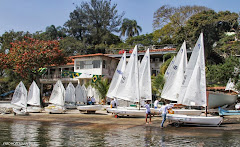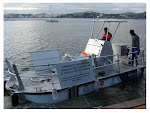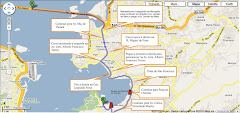As imagens abaixo, divulgadas pala NASA, são do grave desastre ambiental ocorrido na Hungria no dia 04 de outubro de 2010, quando ocorreu o rompimento uma barragem de rejeitos da empresa Ajkai Timföldgyár, que processa bauxita para a produção de alumínio, no sul daquele país.
Com o rompimento da barragem, causando uma torrente de um milhão de metros cúbicos de lama tóxica que inundou duas cidades, que ficaram cobertas por até dois metros de lama. Quatro pessoas morreram imediatamente e muitas foram consideradas desaparecidas. Dezenas de pessoas (123, conforme divulgado recentemente) foram internadas com queimaduras graves causadas pela lama tóxica. A lama tóxica atingiu o rio Danúbio, um dos maiores e mais importantes da Europa, potencializando ainda mais os prejuízos causados pelo acidente.
Para melhor compreensão, reproduzimos também as informações técnicas contidas no comunicado na NASA.
---
Toxic Sludge in Hungary
On October 4, 2010, an accident occurred at the Ajkai Timföldgyár alumina plant in southern Hungary. A corner wall of a retaining pond broke, releasing a torrent of toxic red sludge. According to news reports, a wall of waste thundered down a local stream, inundating several nearby towns, including Kolontar and Devecser, where the sludge was 2 meters (6.5 feet) deep in places. Four people were killed immediately, likely from drowning, and several more were missing. Dozens of residents were hospitalized for chemical burns.
On October 9, 2010, the Advanced Land Imager (ALI) on NASA’s Earth Observing-1 (EO-1) satellite captured a natural-color image of the area affected by the sludge spill. The top image shows a close-up view of the alumina plant and the closest villages. The bottom image shows the wider region, with the close-up view outlined in white.
The alumina plant appears along the right edge of both images. The plant incorporates both bright blue and brick red reservoirs. The retaining wall breach is apparent in the close-up view. Sludge has cut a channel through the northwest corner of the waste reservoir, and spreads onto nearby fields. The sludge pushes into parts of Kolontar and Devecser.
In both images, the sludge spill forms a red-orange streak west of the plant. The wide-area view shows the sludge spill thinning but remaining discernible several kilometers to the west. The New York Times reported that the stream nearest the plant empties into larger rivers, which ultimately feed the Danube River. The BBC reported that authorities were pouring plaster into one of those rivers, the Marcal, in hopes of preventing the sludge’s spread to the Danube.
The red sludge released in this accident is a byproduct refining bauxite into alumina, which is used in the manufacture of aluminum and other products. The World Wide Fund for Nature (WWF) reported that heavy metals in the sludge could soak into the ground and be absorbed by vegetation, causing environmental effects that may last for decades.
In the short term, the sludge swept away cars, filled homes, swamped agricultural fields, damaged bridges, and forced hundreds to evacuate. Injuries left pets and livestock unable to move, and the WWF reported that deaths among deer, rabbits, foxes, and boars couldn’t be estimated.
Related Resources
Associated Press. (2010, October 4). Toxic sludge engulfs several Hungarian towns. The New York Times. Accessed October 11, 2010.
BBC. (2010, October 5). Hungary battles to stem torrent of toxic sludge. Accessed October 11, 2010.
Bilefsky, D. (2010, October 6). Toxic sludge from plant floods Hungary towns. Boston.com. Accessed October 11, 2010.
European Commission Humanitarian Aid Department. (2010, October 8). Hungary activates the EU Civil Protect Mechanism and requests technical expertise to combat mud pollution. ReliefWeb. Accessed October 11, 2010.
Reuters. (2010, October 6). Hungary declares emergency after red sludge spill. ReliefWeb. Accessed October 11, 2010.
Rosenthal, E. (2010, October 8). An “every village.” awash in misery. Green: A Blog About Energy and the Environment. The New York Times. Accessed October 11, 2010.
Washington Post. (2010, October 11). Hungary toxic spill (photos). Accessed October 11, 2010.
World Wide Fund for Nature. (2010, October 6). Toxic mud effects likely to be long term in Hungary. ReliefWeb. Accessed October 11, 2010.
NASA Earth Observatory image created by Jesse Allen, using EO-1 ALI data provided courtesy of the NASA EO-1 team. Caption by Michon Scott.
Instrument: EO-1 - ALI
Fonte: NASA Earth Observatory
























Pelo visto você está na ativa como eu.Desde os nossos tempos de Enge-Rio que venho trabalhando em meio ambiente. Sinto que hoje todo mundo está preocupado, mas entre as medidas propostas nos relatórios e a sua efetiva implantação temos uma grande distância. Os efeitos desse acidente poderiam ser minimizados com um Plano de Emergência bem implantado, será que êle existe?
ResponderExcluirAbraço
Regina Celia